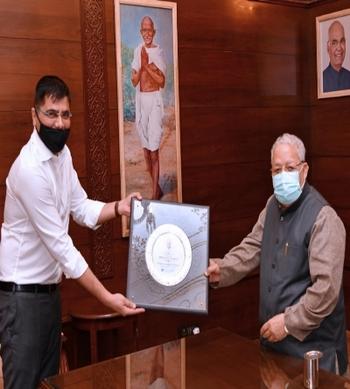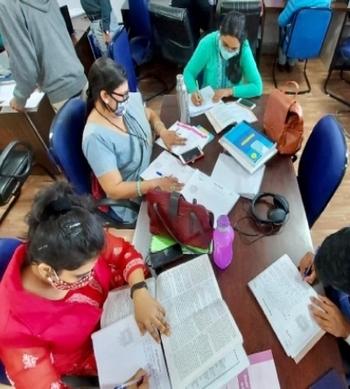CBSE Syllabus of Class 11th PHYSICS 2022-2023:
In class 11 CBSE, students will study the basics of physics, including mechanics, thermodynamics, waves, and optics. The class will begin with an introduction to units and measurements, including the International System of Units (SI). This will be followed by kinematics, which deals with the motion of objects and their properties, such as displacement, velocity, and acceleration.
|
No |
Name |
No. of Periods |
Marks |
|
Unit–I |
Physical World and Measurement |
08 |
23 |
|
|
Chapter–2: Units and Measurements |
||
|
Unit-II |
Kinematics |
24 |
|
|
|
Chapter–3: Motion in a Straight Line |
||
|
|
Chapter–4: Motion in a Plane |
||
|
Unit–III |
Laws of Motion |
14 |
|
|
|
Chapter–5: Laws of Motion |
||
|
Unit–IV |
Work, Energy and Power |
14 |
17 |
|
|
Chapter–6: Work, Energy and Power |
||
|
Unit–V |
Motion of System of Particles and Rigid Body |
18 |
|
|
|
Chapter–7: System of Particles and Rotational Motion |
||
|
Unit-VI |
Gravitation |
12 |
|
|
|
Chapter–8: Gravitation |
||
|
Unit–VII |
Properties of Bulk Matter |
24 |
20 |
|
|
Chapter–9: Mechanical Properties of Solids |
||
|
|
Chapter–10: Mechanical Properties of Fluids |
||
|
|
Chapter–11: Thermal Properties of Matter |
||
|
Unit–VIII |
Thermodynamics |
12 |
|
|
|
Chapter–12: Thermodynamics |
||
|
Unit–IX |
Behaviour of Perfect Gases and Kinetic Theory of Gases |
08 |
|
|
|
Chapter–13: Kinetic Theory |
||
|
Unit–X |
Oscillations and Waves |
26 |
10 |
|
|
Chapter–14: Oscillations |
||
|
|
Chapter–15: Waves |
||
|
Total |
160 |
70 |
|
Skip to
Download CBSE Class 11th Physics Syllabus
Unit I: Physical World and Measurement
Chapter–2: Units and Measurements Need for measurement:
Units of measurement; systems of units; SI units, fundamental and derived units. significant figures. Dimensions of physical quantities, dimensional analysis and its applications.
Unit II: Kinematics
Chapter–3: Motion in a Straight Line
Frame of reference, Motion in a straight line, Elementary concepts of differentiation and integration for describing motion, uniform and non- uniform motion, and instantaneous velocity, uniformly accelerated motion, velocity - time and position-time graphs. Relations for uniformly accelerated motion (graphical treatment).
Chapter–4: Motion in a Plane
Scalar and vector quantities; position and displacement vectors, general vectors and their notations; equality of vectors, multiplication of vectors by a real number; addition and subtraction of vectors, Unit vector; resolution of a vector in a plane, rectangular components, Scalar and Vector product of vectors. Motion in a plane, cases of uniform velocity and uniform acceleration- projectile motion, uniform circular motion.
Unit III: Laws of Motion
Chapter–5: Laws of Motion
Intuitive concept of force, Inertia, Newton's first law of motion; momentum and Newton's second law of motion; impulse; Newton's third law of motion. Law of conservation of linear momentum and its applications. Equilibrium of concurrent forces, Static and kinetic friction, laws of friction, rolling friction, lubrication. Dynamics of uniform circular motion: Centripetal force, examples of circular motion (vehicle on a level circular road, vehicle on a banked road).
Unit IV: Work, Energy and Power
Chapter–6: Work, Energy and Power
Work done by a constant force and a variable force; kinetic energy, work- energy theorem, power. Notion of potential energy, potential energy of a spring, conservative forces: non- conservative forces, motion in a vertical circle; elastic and inelastic collisions in one and two dimensions.
Unit V:Motion of System of Particles and Rigid Body
Chapter–7: System of Particles and Rotational Motion
Centre of mass of a two-particle system, momentum conservation and Centre of mass motion. Centre of mass of a rigid body; centre of mass of a uniform rod. Moment of a force, torque, angular momentum, law of conservation of angular momentum and its applications. Equilibrium of rigid bodies, rigid body rotation and equations of rotational motion, comparison of linear and rotational motions. Moment of inertia, radius of gyration, values of moments of inertia for simple geometrical objects (no derivation).
Unit VI: Gravitation
Chapter–8: Gravitation
Kepler's laws of planetary motion, universal law of gravitation. Acceleration due to gravity and its variation with altitude and depth. Gravitational potential energy and gravitational potential, escape velocity, orbital velocity of a satellite.
Unit VII: Properties of Bulk Matter
Chapter–9: Mechanical Properties of Solids
Elasticity, Stress-strain relationship, Hooke's law, Young’s modulus, bulk modulus, shear modulus of rigidity (qualitative idea only), Poisson's ratio; elastic energy.
Chapter–10: Mechanical Properties of Fluids
Pressure due to a fluid column; Pascal's law and its applications (hydraulic lift and hydraulic brakes), effect of gravity on fluid pressure. Viscosity, Stokes' law, terminal velocity, streamline and turbulent flow, critical velocity, Bernoulli's theorem and its simple applications. Surface energy and surface tension, angle of contact, excess of pressure across a curved surface, application of surface tension ideas to drops, bubbles and capillary rise.
Chapter–11: Thermal Properties of Matter
Heat, temperature, thermal expansion; thermal expansion of solids, liquids and gases, anomalous expansion of water; specific heat capacity; Cp, Cv - calorimetry; change of state - latent heat capacity. Heat transfer-conduction, convection and radiation, thermal conductivity, qualitative ideas of Blackbody radiation, Wein's displacement Law, Stefan's law .
Unit VIII: Thermodynamics
Chapter–12: Thermodynamics
Thermal equilibrium and definition of temperature zeroth law of thermodynamics, heat, work and internal energy. First law of thermodynamics, Second law of thermodynamics: gaseous state of matter, change of condition of gaseous state -isothermal, adiabatic, reversible, irreversible, and cyclic processes.
Unit IX :Behavior of Perfect Gases and Kinetic Theory of Gases
Chapter–13: Kinetic Theory
Equation of state of a perfect gas, work done in compressing a gas. Kinetic theory of gases - assumptions, concept of pressure. Kinetic interpretation of temperature; rms speed of gas molecules; degrees of freedom, law of equi-partition of energy (statement only) and application to specific heat capacities of gases; concept of mean free path, Avogadro's number.
Unit X: Oscillations and Waves
Chapter–14: Oscillations
Periodic motion - time period, frequency, displacement as a function of time, periodic functions and their application. Simple harmonic motion (S.H.M) and its equations of motion; phase; oscillations of a loaded spring- restoring force and force constant; energy in S.H.M. Kinetic and potential energies; simple pendulum derivation of expression for its time period.
Chapter–15: Waves
Wave motion: Transverse and longitudinal waves, speed of travelling wave, displacement relation for a progressive wave, principle of superposition of waves, reflection of waves, standing waves in strings and organ pipes, fundamental mode and harmonics, Beats.
Conclusions
For specific conclusions related to your Class 11 Physics exams, I would recommend referring to your textbook, syllabus, and consulting with your teachers or classmates who have taken the exam recently. They can provide you with more up-to-date information and guidance based on their experience with the specific curriculum and examination pattern.
FAQs
Q1: How should I prepare for CBSE Class 11 Physics exams?
A1: To prepare for Class 11 Physics exams, it is crucial to have a good understanding of the concepts and principles. Start by thoroughly studying your textbook and notes, and make sure to practice numerical problems and derivations regularly. Additionally, solve sample papers, previous years' question papers, and take mock tests to familiarize yourself with the exam pattern and improve your time management skills.
Q2: What are the best reference books for CBSE Class 11 Physics?
A2: The NCERT textbook for Class 11 Physics is the primary reference book recommended by CBSE. It covers the entire syllabus and provides a solid foundation. However, if you want additional reference material, you can consider books authored by HC Verma, DC Pandey, or P. N. Rai. These books are popular among students and provide a deeper insight into the subject.
Q3: Are practical's important in CBSE Class 11 Physics?
A3: Yes, practicals are an integral part of the CBSE Class 11 Physics curriculum. They help you develop practical skills, experimental techniques, and enhance your understanding of theoretical concepts through hands-on experience. Practical examinations also contribute to your overall marks, so it is important to perform well in them.
Q4: How should I approach numerical problems in CBSE Class 11 Physics?
A4: Numerical problems in Class 11 Physics require a combination of conceptual understanding and mathematical skills. Start by identifying the given quantities, understand the problem statement, and visualize the situation. Then, apply the appropriate formulas and equations to solve the problem step by step. Pay attention to units and significant figures in your calculations.
Download CBSE Class 11th Physics PDF

MissionGyan Team
We aim to eradicate the education gap and serve equal and free education to all with the help of skilled and expert volunteers and teachers.





